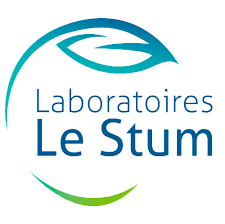
ESSENTIAL iron contributes to the oxygenation of blood and organs
The main role of iron is to transport and store oxygen from the blood to the organs and muscles of the human body.
It is essential for the formation of hemoglobin, a protein found in red blood cells. This binds oxygen to the red blood cells and gives them their color. Without iron, the red blood cells become small, less colorful, and unable to deliver oxygen to the organs. This is why individuals with iron deficiency often appear pale and short of breath with the slightest exertion. These individuals then have iron deficiency anemia.
Iron has also been shown to be useful in children's cognitive development, energy metabolism, ATP production, fatigue and even during pregnancy.
In men, the normal blood iron level is between 70 and 175 μg/dl (micrograms per deciliter) and in women it is between 50 and 150 μg/dl.
How to determine iron deficiency?
Anemia is most often caused by iron deficiency, the most common nutritional deficiency in the world. Women are more affected than men, particularly due to losses associated with menstruation and a lower baseline iron concentration in their bodies.
An iron deficiency can have several consequences:
- Premature births in pregnancy
- Cognitive disorders (delayed growth, development, poor concentration skills which can lead to poor learning abilities)
- Body weaknesses
- Pallor
- Dizziness
- Decreased physical strength
- Early shortness of breath during physical exertion
- Sensitivity to cold
- Heart problems
- Tachycardia or palpitations
In which foods can you find iron?
- Meats: beef, pork, lamb, veal, liver, chicken, turkey
- Eggs
- Pisces
- Pasta and rice
- Chickpeas, lentils, dried peas and beans
- Spinach, broccoli, Brussels sprouts, green peas
Please note that there are two types of iron:
- Heme iron (from meat)
- Non-heme iron (from plants, eggs and dairy products)
Since iron is less well absorbed by the body, vegetarians and others who follow meat-free diets are more likely to be iron deficient.
In order to better assimilate non-heme iron, it is useful to consume it in parallel with vitamin C. Citrus fruits (oranges, lemons, grapefruits), tomatoes and peppers are good sources of vitamin C.
Who are the people at risk?
- Women of childbearing age, in case of heavy periods
- Pregnant women and/or those with multiple/close pregnancies
- Vegetarians
- Children from 6 months to 4 years
- People with a health condition that involves chronic blood loss
- People suffering from kidney failure or those on dialysis
- Consumers of medications such as antacids, aspirin and anti-inflammatories that can cause internal bleeding
Why choose the ESSENTIAL Iron?
ESSENTIAL iron provides:
- a chelated form (bisglycinate) of iron which has greater bioavailability than conventional forms (carbonates and sulfates).
- a stabilized formula which avoids the usual digestive discomforts often linked to taking this trace element (namely gastric disorders, constipation, nausea).
- 100% of your daily iron intake in just one capsule.





